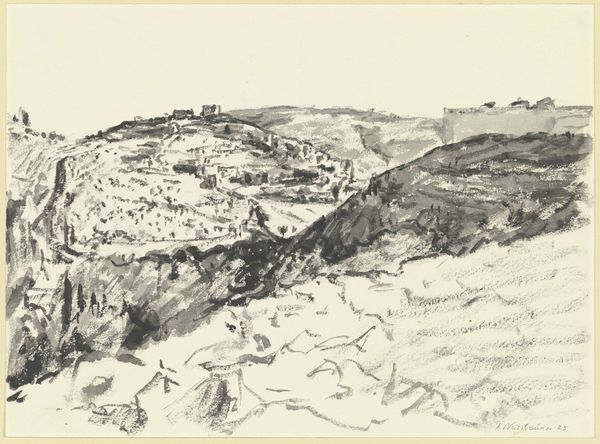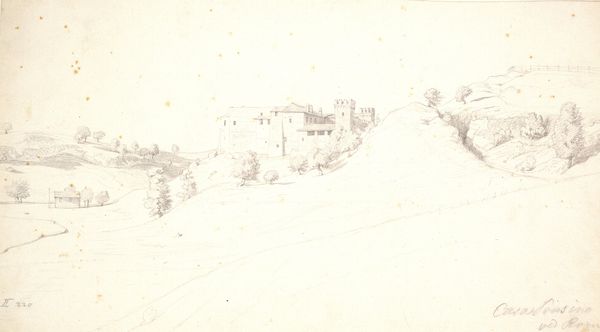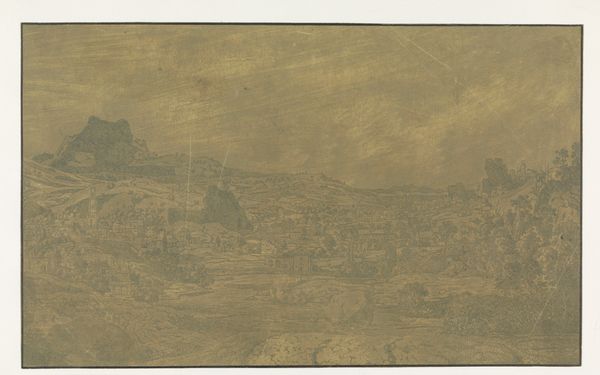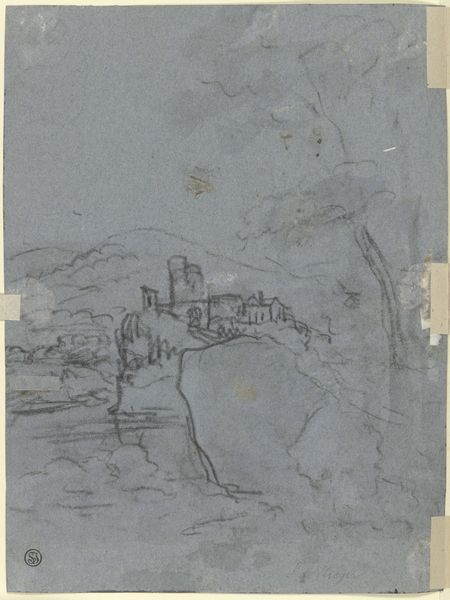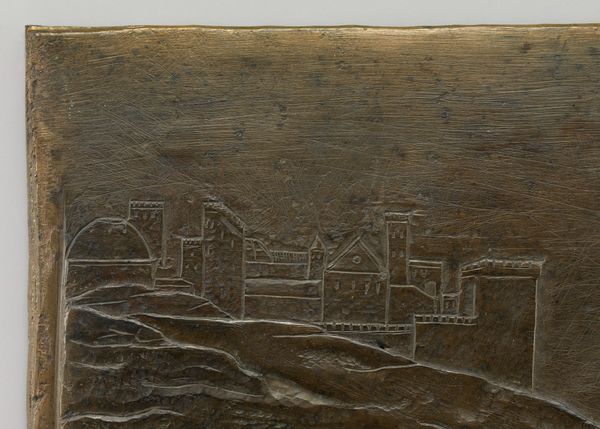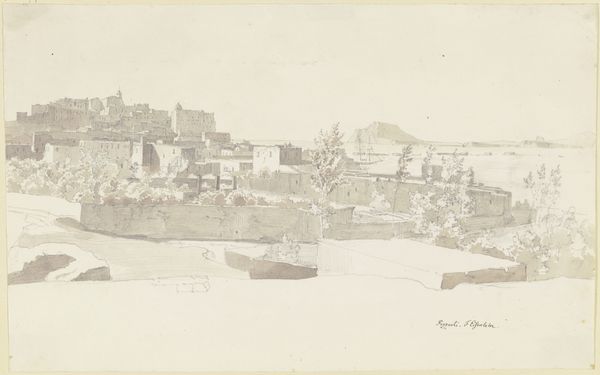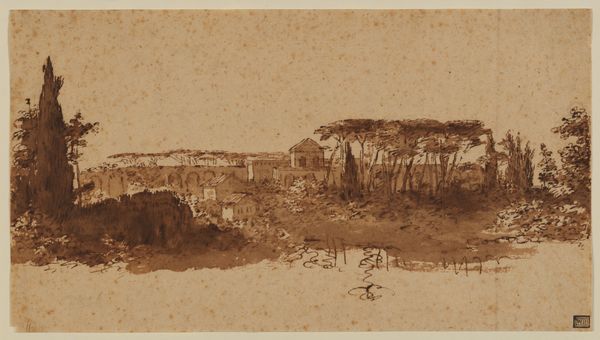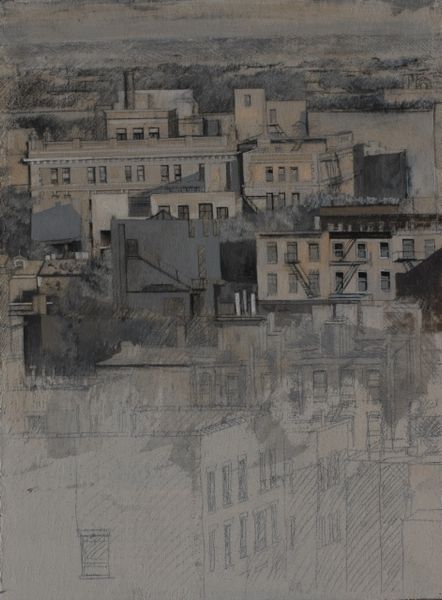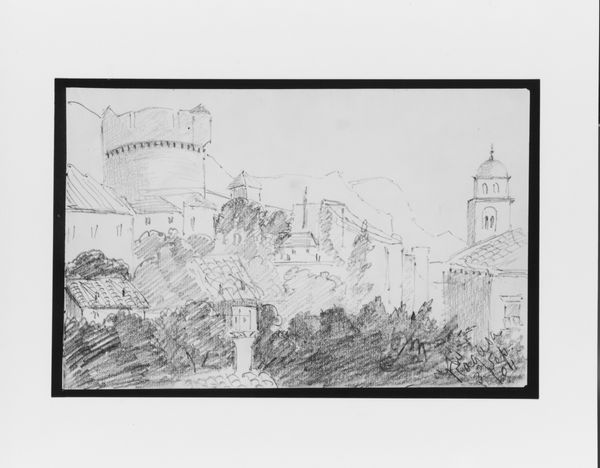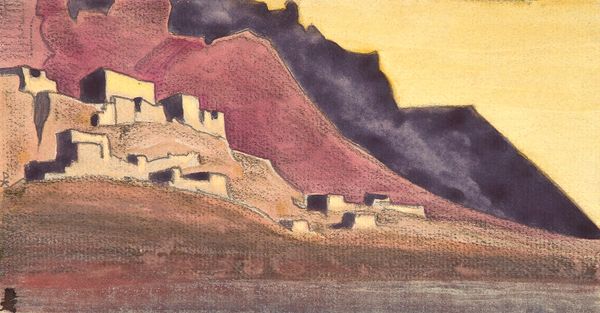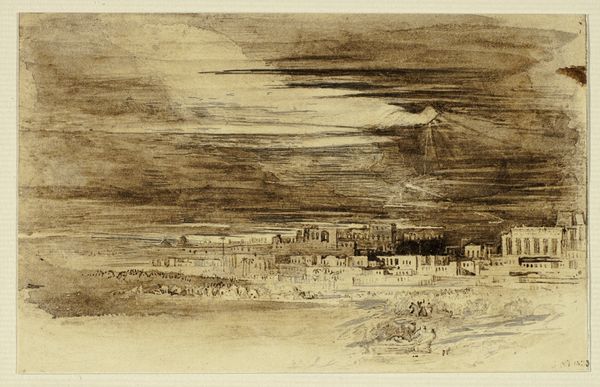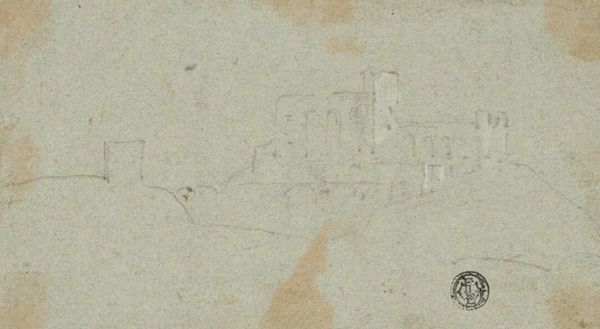
Dimensions: overall: 24 x 33 cm (9 7/16 x 13 in.)
Copyright: National Gallery of Art: CC0 1.0
Editor: This is "Chateau of Vallambrosa, Cannes" by Charles Nègre, a daguerreotype from around 1852. There's such an ethereal quality to it, a sort of haunting stillness. What do you see when you look at it? Curator: Immediately, I'm struck by the materiality of this object. The daguerreotype process, a chemical inscription on a silvered copper plate, demanded meticulous labor and a deep understanding of materials. Consider the social context: photography was emerging, democratizing image-making, but still laborious. Editor: That's interesting! I hadn't considered it from a material perspective, but you're right, there would have been considerable material constraints that go hand in hand with making the photo. Curator: Precisely! The long exposure times necessitated stillness – not just from the subject, but also conceptually. Photography challenged painting’s dominance, yet it also mirrored the artistic conventions of landscape painting at the time. Think about it—what kind of labor did it entail, even finding these "perfect" spots? Editor: So you're saying Nègre was playing with conventions of labor when creating and selecting his artwork. How does that play into this specific piece, this photograph? Curator: The very act of creating this daguerreotype involved material transformation, labor intensive production processes that intersect with social values. Think about how landscape, previously the domain of the wealthy to commission, was suddenly being made available to wider consumption through reproducible technologies, still reliant on artisanal skill. How does seeing the image in these terms change your initial reaction? Editor: It reframes it completely! I saw a pretty picture but now understand a negotiation of labor and social structures in the act of its production. Thanks for pointing that out! Curator: My pleasure. By focusing on material and social contexts, we move beyond aesthetic appreciation toward a critical understanding of art’s role in shaping our world.
Comments
No comments
Be the first to comment and join the conversation on the ultimate creative platform.
